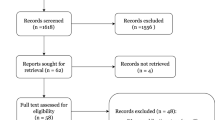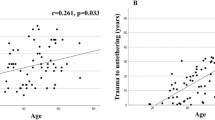Abstract
The controversy about surgical vs conservative treatment of the injured spine with cord damage is centuries old. Until the end of the Second World War the majority of patients died or lived a short miserable life. Subsequently, Guttmann, an experienced neurosurgeon, realised surgery was not beneficial and sometimes detrimental to the person with spinal cord injury. Guttman, Frankel and others demonstrated with expert conservative management of the spine and the multi-system consequences of cord damage most patients made some neurological recovery and most with incomplete cord injury recovered ambulation regardless of X-ray findings. Attention to the non-medical effects of paralysis and post discharge supervision enabled persons with SCIs to enjoy complication free, dignified, productive and even competitive lives in sport and employment. The introduction of CT, MRI and safe anaesthesia led to the beliefs that surgical realignment, stabilisation and/or decompression improved neurologic outcome, facilitated early mobilisation and completion of rehabilitation, shortened hospitalisation, facilitated management and reduced cost. However, there is no supporting evidence for these claims. This manuscript describes the rationale and outcomes of conservative management and the weakness of the arguments for surgical management.
Similar content being viewed by others
Log in or create a free account to read this content
Gain free access to this article, as well as selected content from this journal and more on nature.com
or
References
El Masri (y) WS. Physiological instability of the spinal cord following injury. Paraplegia. 1993;31:273–75.
El Masri (y) WS. Traumatic spinal cord injury: the relationship between pathology & clinical implications. Trauma. 2006;8:29–46.
Guttmann L. Spinal cord injuries: comprehensive management and research. 2nd ed. Oxford: Blackwell; 1976.
Frankel HL, Hancock DO, Hyslop G, Melzack J, Michaelis LS, Ungar GH, et al. The value of postural reduction in initial management of closed injuries of the spine with paraplegia and tetraplegia. Paraplegia. 1969;7:179–92.
El Masri(y) WS, Jaffray DJ. Recent developments in the management of injuries of the cervical spine. In: Frankel HL, editor. Spinal cord trauma. Amsterdam: Elsevier; 1992. p. 55–73.
Kumar N, Pieri-Davies S, Chowdhury JR, Osman A, El Masri (y) WS. Evidence-based respiratory management strategies required to prevent complications and improve outcome in acute spinal cord injury patients. Trauma. 2017;19:23–29.
Morgan MDL, Silver JR, Williams SJ. The respiratory system of the spinal cord patient. In: Bloch RF, Basbaum M editors. Management of spinal cord injury. Baltimore: Williams and Wilkins; 1986. p. 78–17.
Folman Y, El Masri (y) WS. Spinal cord injury: prognostic indicators. Injury. 1989;20:92–3.
Katoh S, El Masri (y) WS. Neurological recovery after conservative treatment of cervical cord injuries. J Bone Joint Surg Br. 1994;76B:225–28.
Crozier KS, Graziani V, Ditunno JF Jr, Herbison GJ. Spinal cord injury: prognosis for ambulation based on sensory examination in patients who are initially motor complete. Arch Phys Med Rehabil. 1991;72:119–21.
Poynton AR, O’ Farrell DA, Shannon F, Murray P, McManus F, Walsh MG. Sparing of sensation to pin prick predicts recovery of a motor segment after injury to the spinal cord. J Bone Jt Surg Br. 1997;79:952–4.
Katoh S, El Masry WS, Jaffray D, McCall IW, Eisenstein SM, Pringle RG, et al. Neurologic outcome in conservatively treated patients with incomplete closed traumatic cervical spinal cord injuries. Spine. 1996;21:2345–51.
Van Middendorp JJ. Letter to the editor: “Early versus delayed decompression for traumatic cervical spinal cord injury: results of the Surgical Timing in Acute Spinal Cord Injury Study (STASCIS)”. Spine J. 2012;12:540–2.
Fehlings MG, Vaccaro A, Wilson JR, Singh A, W Cadotte D, Harrop JS, et al. Early versus delayed decompression for traumatic cervical spinal cord injury: results of the Surgical Timing in Acute Spinal Cord Injury Study (STASCIS). PLoS ONE. 2012;7:e32037.
El Masri WS, Meerkotter DV. Early decompression of the spinal cord following injury: arguments for and against. In: Ellis LSeditor. Spinal cord dysfunction. Vol II Intervention & treatment. Oxford: Oxford University Press; 1992. p. 7–27.
Rosenberg N, Lenger R, Weisz I, Stein H. Neurological deficit in a consecutive series of vertebral fractures patients with bony fragments within the spinal canal. Spinal Cord. 1996;35:92–5.
El Masri(y) WS, Short DJ. Current concepts: spinal injuries & rehabilitation. Curr Opin Neurol. 1997;10:484–92.
Boerger TO, Limb D, Dickson RA. Does canal clearance affect neurological outcome after thoracolumbar burst fractures. J Bone Jt Surg Br. 2000;82B:629–35.
Mohanty SP, Venkatram N. Does neurological recovery in thoracolumbar and lumbar burst fractures depend on the extent of canal compromise? Spinal Cord. 2002;40:295–99.
El Masry WS, Osman AE. Clinical perspectives on spinal injuries. In: Cassar-Pullicino V, Imhof H, editors. Spinal trauma: an imaging approach. New York, NY: Thieme Medical; 2006. p. 1–14.
Ibrahim A, Li Y, Li D, Raisman G. Olfactory ensheathing cells: ripples of an oncoming tide?. Lancet Neurol. 2006;5:453–57.
El Masri(y) WS, Kumar N. Active physiological conservative management in traumatic spinal cord injuries—an evidence-based approach. Trauma. 2017;19:10–22.
Fidler MW. Re-modelling of the spinal canal after burst fracture. A prospective study of two cases. J Bone Joint Surg. 1988;70B:730–32.
Marshall LF, Knowlton S, Garfin SR, Klauber MR, Eisenberg HM, Kopaniky D, et al. Deterioration following spinal cord injury: a multicenter study. J Neurosurg. 1987;60:400–4.
El Masri(y) WS, Biyani A. Incidence, management and outcome of post traumatic syringomyelia. In memory of Mr Bernard Williams. J Neurol Neurosurg Psychiatry. 1996;60:141–6.
Kwon BK, Curt A, Belanger LM, Bernardo A, Chan D, Markez JA, et al. Intrathecal pressure monitoring and cerebrospinal fluid drainage in acute spinal cord injury: a prospective randomized trial. J Neurosurg Spine. 2009;10:181–93.
Author information
Authors and Affiliations
Corresponding author
Ethics declarations
Conflict of interest
The authors declare that they have no conflict of interest.
Rights and permissions
About this article
Cite this article
El Masri(y), W.S. Traumatic spinal injury and spinal cord injury: point for active physiological conservative management as compared to surgical management. Spinal Cord Ser Cases 4, 14 (2018). https://doi.org/10.1038/s41394-018-0045-z
Received:
Accepted:
Published:
DOI: https://doi.org/10.1038/s41394-018-0045-z
This article is cited by
-
Retained bullet in the cervical spinal canal and the associated surgical management conundrum: case report and review of the literature
Spinal Cord Series and Cases (2020)
-
Football (soccer)-related spinal cord injury—reported cases from 1976 to 2020
Spinal Cord Series and Cases (2020)
-
Clinical outcome of closed reduction of cervical spine injuries in a cohort of Nigerians
Spinal Cord Series and Cases (2019)
-
Awards and updates
Spinal Cord Series and Cases (2018)
-
Multilevel critical stenosis with minimal functional deficits: a case of cervical spondylotic myelopathy
Spinal Cord Series and Cases (2018)



